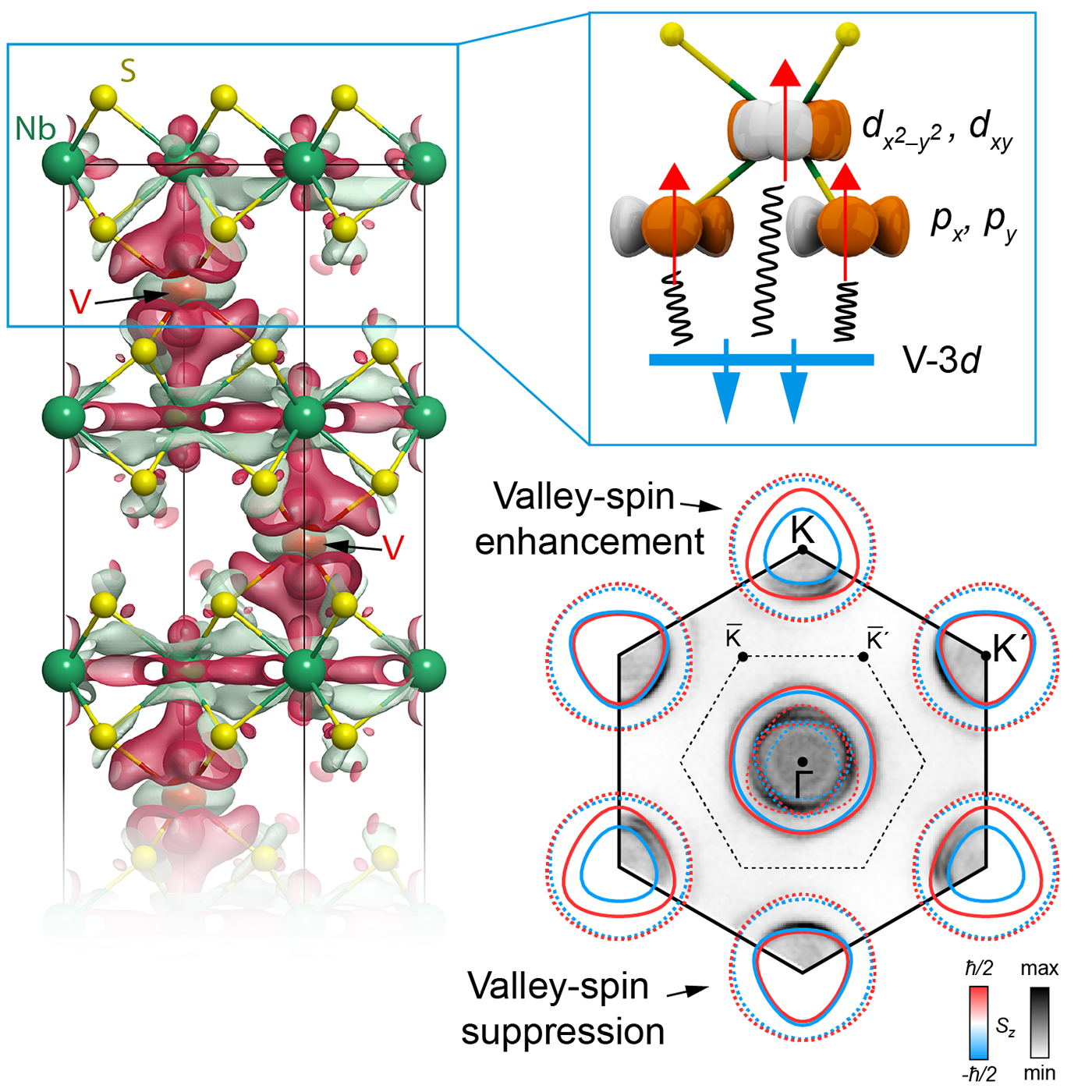Proximity-induced
Giant Valley-Zeeman Coupling at the Surface of an Intercalated TMD
Spin-valley locking is a widespread phenomenon among transition metal dichalcogenides (TMDCs) that have local or global inversion asymmetry. This locking mechanism stabilizes properties such as Ising superconductivity and opens new routes towards the field of "valleytronics", which aims to exploit the valley degree of freedom in electronic systems. The underlying valley-spin splitting in these materials is set by spin-orbit coupling, but it can be tuned by applying external magnetic fields or through proximity coupling. However, to date, only modest changes have been observed in the valley-spin splitting of TMDCs. In this study, we investigate the electronic structure of the V-intercalated transition metal dichalcogenide V1/3NbS2 using microscopic-area spatially resolved and angle-resolved photoemission spectroscopy (ARPES) combined with realistic density functional theory (DFT) caculations. Our measurements and corresponding DFT calculations reveal that the bulk magnetic order induces a giant valley-selective Ising coupling exceeding 50 meV in the surface NbS2 layer. This energy scale is of comparable magnitude to the intrinsic spin-orbit splittings and indicates how coupling of local magnetic moments to itinerant states of a TMDC monolayer provides a powerful route to controlling their valley-spin splittings. Our study provides new insight into the electronic structure of TMDCs and demonstrates that bulk magnetic order can play a significant role in controlling the valley-spin splitting of these materials. This work has important implications for the development of valleytronics, as it suggests new ways to control the valley degree of freedom in electronic systems.

Vanadium ions intercalated between NbS2 layers act as a bridge allowing electronic charge transfer from one layer to another (left panel). Through this process the spin of electrons with in-plane orbital polarization are coupled with V magnetic moments (top-right panel), leading to an enhancement/suppression of spin-valley polarization in the momentum space (bottom-right panel).

